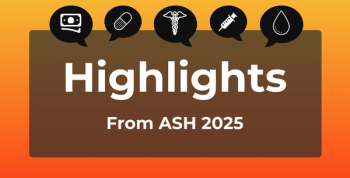
Reduced Processed Red Meat Consumption May Lower Diabetes Risk
A prospective cohort study found that women who replaced processed red meat with fatty fish, unprocessed red meat, or vegetables had reduced risks of hypertension and diabetes.
Processed red meat, such as sausage, salami, ham, and bacon, is associated with a higher risk of diabetes and hypertension. However, the efficacy of replacement foods on reducing diabetes and hypertension is unknown. A new study, published in
The researchers gathered their data from the E3N cohort nstudy, which is a French prospective cohort that was started in 1990 and evaluated outcomes among women aged 40 to 65 years at baseline. Follow-up questionnaires were sent in 1993, 1995, 1997, 2000, 2002, 2005, 2008, 2011, and 2014. Participants were included if they completed the first dietary questionnaire, did not report hypertension or diabetes when studying each disease separately, and did not report cardiovascular disease. Women with no reported meat or fish intake were excluded.
Food history questionnaires from 1993 and 2005 were used to estimate habitual dietary intake. Nonprocessed red meat, poultry, fish, eggs, pulses, and vegetables were considered potential replacement foods of processed red meat.
Incident type 2 diabetes was assessed through self-report, validation questionnaires, and drug reimbursement files from 1993 to 2012. Participants with hypertension were asked to report their diagnosis at baseline and for each follow-up questionnaire.
There were 2681 cases of diabetes identified in an average 18.7 years of follow-up. The median (IQR) average consumption of processed red meat was 23 (12-37) g/day or 1.1 servings per week. The highest consumers of processed red meat were generally younger, more likely to be smokers or have hypertension, were less educated, and had a higher body mass index (BMI) and total energy intake.
The researchers found that replacing a weekly serving of processed red meat with fatty fish (HR, 0.85; 95% CI, 0.73-0.97), unprocessed red meat (HR, 0.92; 95% CI, 0.87-0.96), eggs (HR, 0.96; 95% CI, 0.86-0.99), pulses (HR, 0.92; 95% CI, 0.88-0.96), or vegetables (HR, 0.89; 95% CI, 0.85-0.92) had an association with reduced risk of diabetes.
Lean fish was also found to have an association with a lower risk of diabetes but it was weaker (HR, 0.95; 95% CI, 0.87-1.01). In participants who smoked, replacing processed red meat with lean fish was associated with an increased risk of diabetes (HR, 1.08; 95% CI, 1.01-1.15).
There were 12,327 cases of hypertension identified in an average 18.3 years of follow up. The median average consumption of processed red meat was 22 (12-37) g/day or 1.0 servings per week in this group.
A lower risk of hypertension was found when replacing processed red meat with fatty fish (HR, 0.85; 95% CI, 0.79-0.91), unprocessed red meat (HR, 0.97; 95% CI, 0.95-0.99), vegetables (HR, 0.96; 95% CI, 0.94-0.98), or pulses (HR, 0.97; 95% CI, 0.95-0.99). When lean fish was used as a substitution, it was associated with a higher risk of hypertension (HR, 1.04; 95% CI, 1.00-1.07). No difference in risk was observed when substituting eggs or poultry.
There were some limitations to this study. All participants self-reported their diet, which may have caused errors in this assessment. The study could not properly adjust for changes in diet over time, and the assignment of different dietary strategies cannot be accurately emulated. Misclassification of disease was possible, as hypertension and diabetes diagnoses were based on self-report. Further, the observational nature of the study makes it so that the evidence cannot be considered causal.
The researchers concluded that substituting processed red meat for fatty fish, unprocessed red meat, eggs, vegetables, or pulses could reduce the risk of hypertension and diabetes in women.
Reference
Thao U, Lajous M, Laouali N, Severi G, Boutron-Ruault MC, MacDonald CJ. Replacing processed red meat with alternative protein sources is associated with a reduced risk of hypertension and diabetes in a prospective cohort of French women. Br J Nutr. Published online September 1, 2022. doi:10.1017/S0007114522002689
Newsletter
Stay ahead of policy, cost, and value—subscribe to AJMC for expert insights at the intersection of clinical care and health economics.








